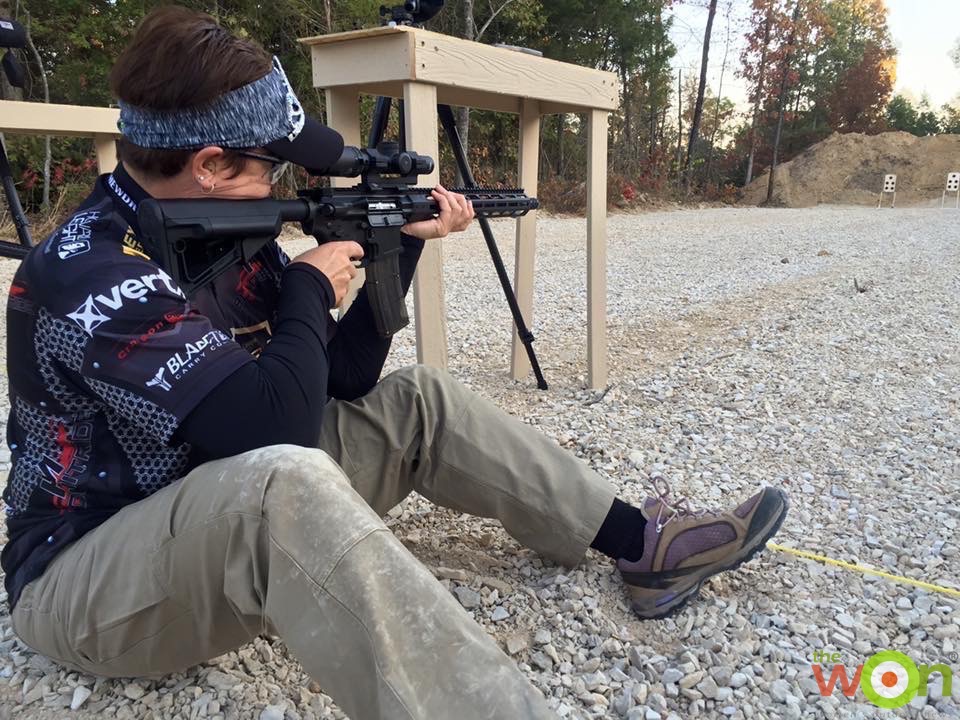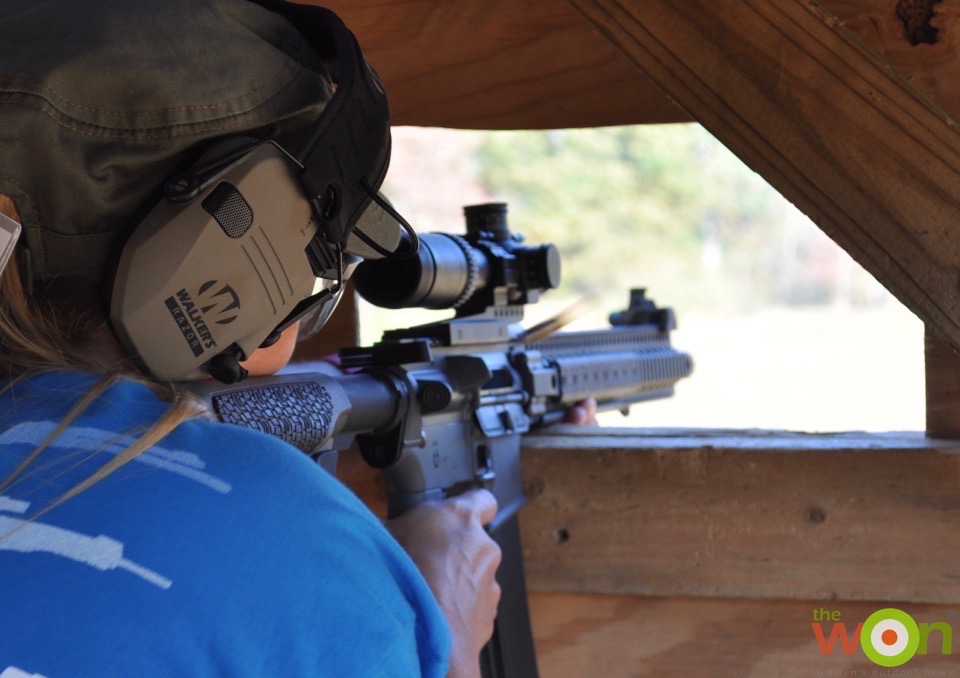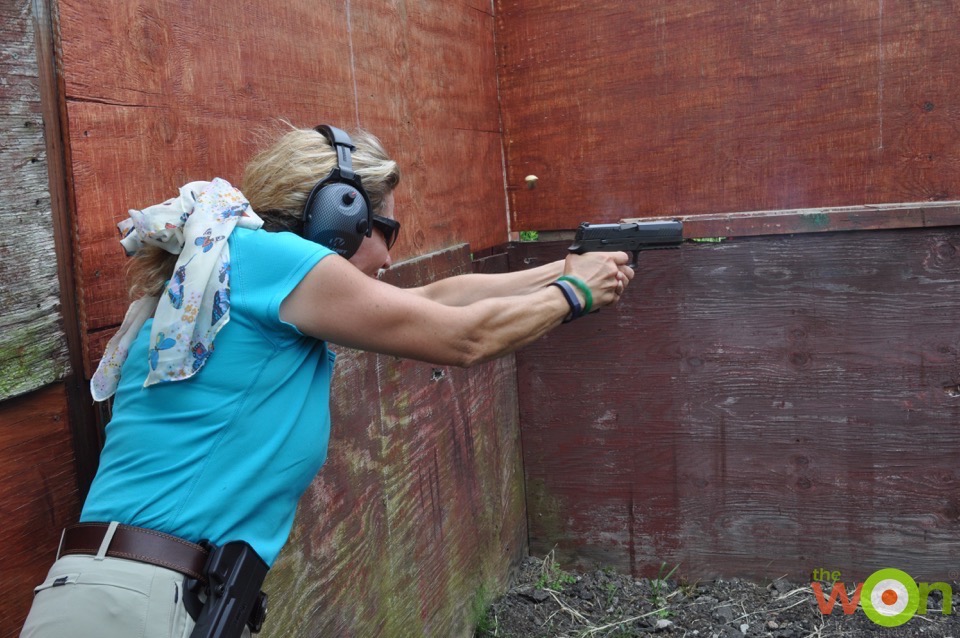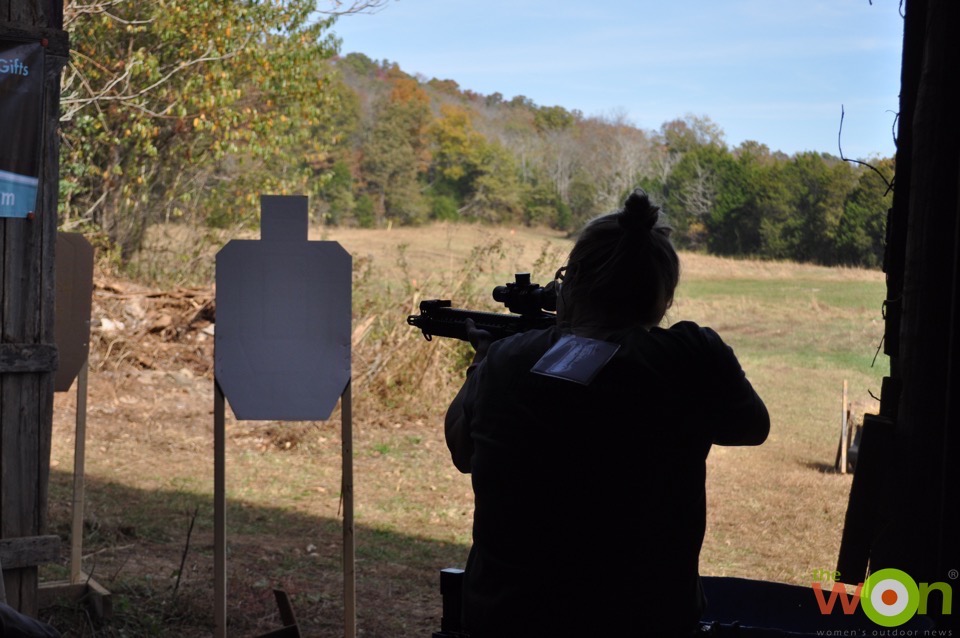It’s not every day I can head out and get into a gunfight to vet my self-defense shooting skills (nor would I want to). About the closest opportunity I have is competing in shooting matches. Think about it the following way.
In a gunfight, the enemy is a person – someone you believe is going to cause bodily harm to you or a loved one or a friend. During competition, time is the enemy. The match director sets a time to complete each stage.
The bad guy plans when, where and how the gunfight happens. At a competition, the match director sets the criteria through various stagings. I then need to think about how to move through the obstacles and shoot at the right targets.
Sure, at a match I don’t have someone shooting back at me and it’s not a life and death situation; however, by thinking about a match with this mindset, I make it more than just a shooting competition. It becomes real life training.

Having the proper grip helps to get the sights back on target quickly. (Chris Cerino photo)
During competition, all the fundamentals of shooting: sight picture, trigger press and grip, come into play. To a hit target, I need to know how to line up the sights and make the correct sight picture – quickly. With small and distant targets, I better know how press the trigger without disturbing my sights. Fast, multiple shots on the same target require a proper grip.

Competition is a great way to see how well you do moving in and out of different positions.
Most stages at a match involve numerous shots, engaging various targets and working around or using barricades. Sometimes the match director includes “no shoot” targets. Think about these as innocent people or hostages in a gunfight. You don’t want to shoot them. Also, magazine changes come into play when a stage involves multiple rounds. I need to know how to do the exchange smoothly and usually on the move. And with all those rounds, malfunctions can happen. In order to move on, I better clear them.
When the match director includes barricades, I shoot and move around them or use them for support. In the real world, I might have a car to shoot under, piece of furniture to hide behind or a door to move around. Heck, if I have to make a precision shot in a mall with my pistol, I might use a railing for support or a table in the food court.

Knowing how to use a barricade to one’s advantage is important.
When the you-fill-in-the-blank-here hits the fan in a gunfight and the situation goes dynamic, I better know how to move and shoot. During a stage, I may have to shoot a target multiple times while on the move, or even multiple targets while moving. Depending on the type of match – especially if it takes place on natural terrain – I move over rocks, hills and around trees. I can’t go into a contrived stance. My feet may end up together, one on a rock or even in a wide stance to engage a target through a port in a barricade. Hmmmm … similar to moving through a building with furniture, toys on the ground and doorways. Makes you rethink wearing cheap flip-flops, doesn’t it?

Shoot houses are a great way to practice moving through rooms with obstacles.
After a match I review the following points:
On the other hand, if I do things correctly, here’s what I can take away from the experience:

Identifying “shoot” and “no shoot” targets is often part of a shooting match.
After a match, I run through these pictures in my mind – reloads, uses of support and malfunctions. In fact, sometimes I ask my husband or a friend to record me so I can watch my actions and assess.
So, if you carry for self-defense, the next time you head to a match, take these points into consideration. Make competition a way to vet your shooting skills.
Find more article on competition shooting here.
Michelle Cerino, aka Princess Gunslinger, first entered the firearms industry in 2011 as co-owner, president and trainer at a national training company. She immediately began competing in both 3-Gun and NRA Action Pistol, becoming a sponsored shooter. Michelle is currently a columnist and Managing Editor of Women’s Outdoor News, as well as owner of Pervenio LLC. She also manages social media for Vera Koo and FASTER Saves Lives. Michelle encourages others to step out of the comforts of home and explore. View all posts by Michelle Cerino